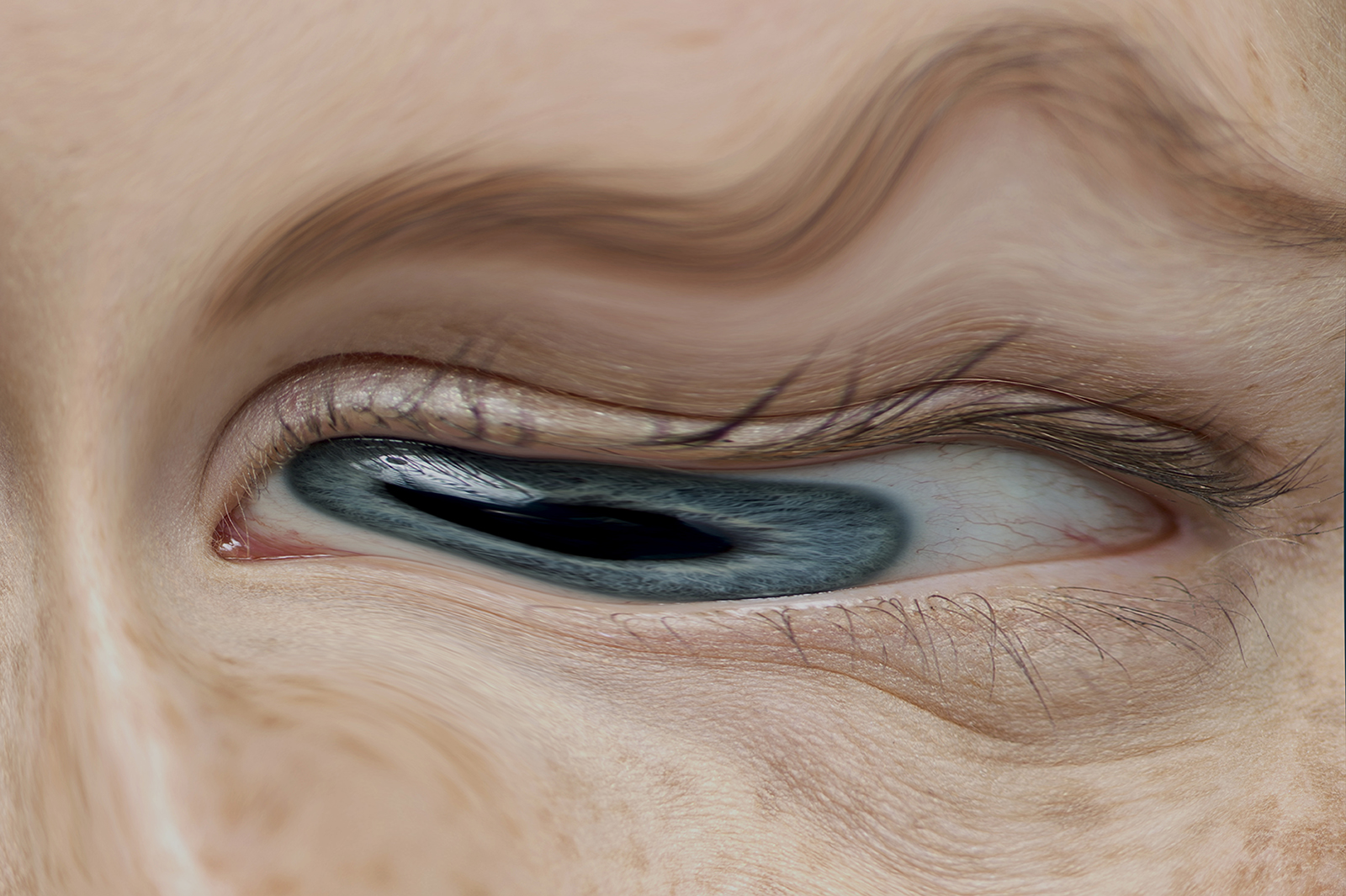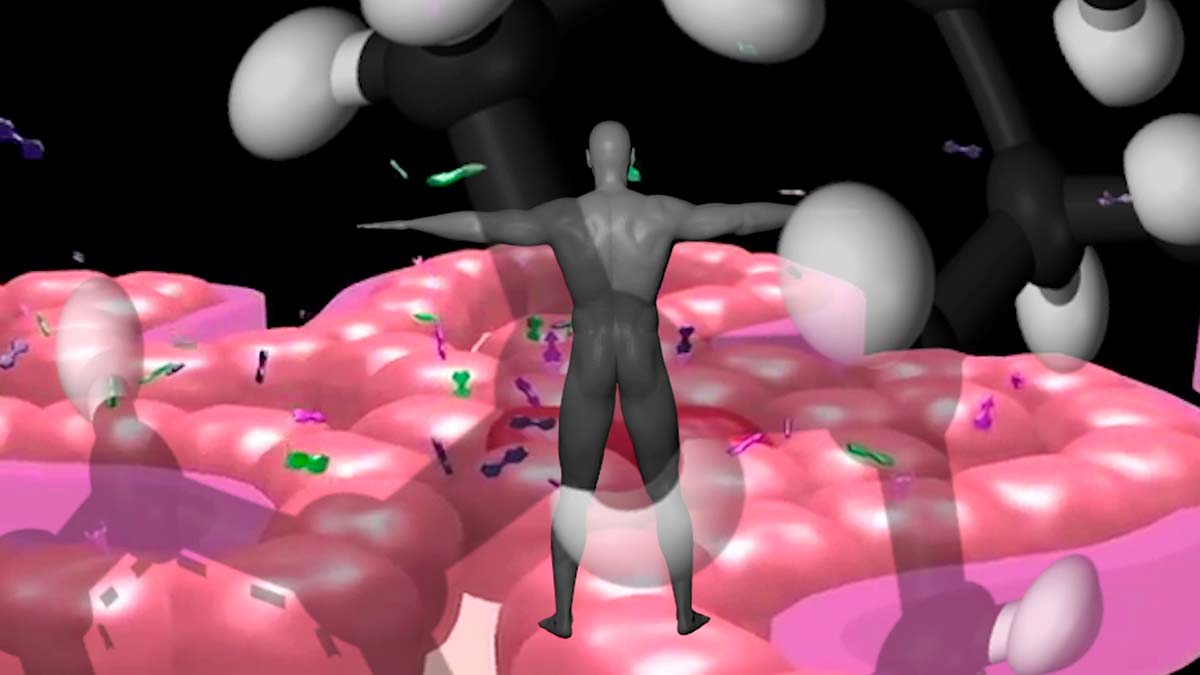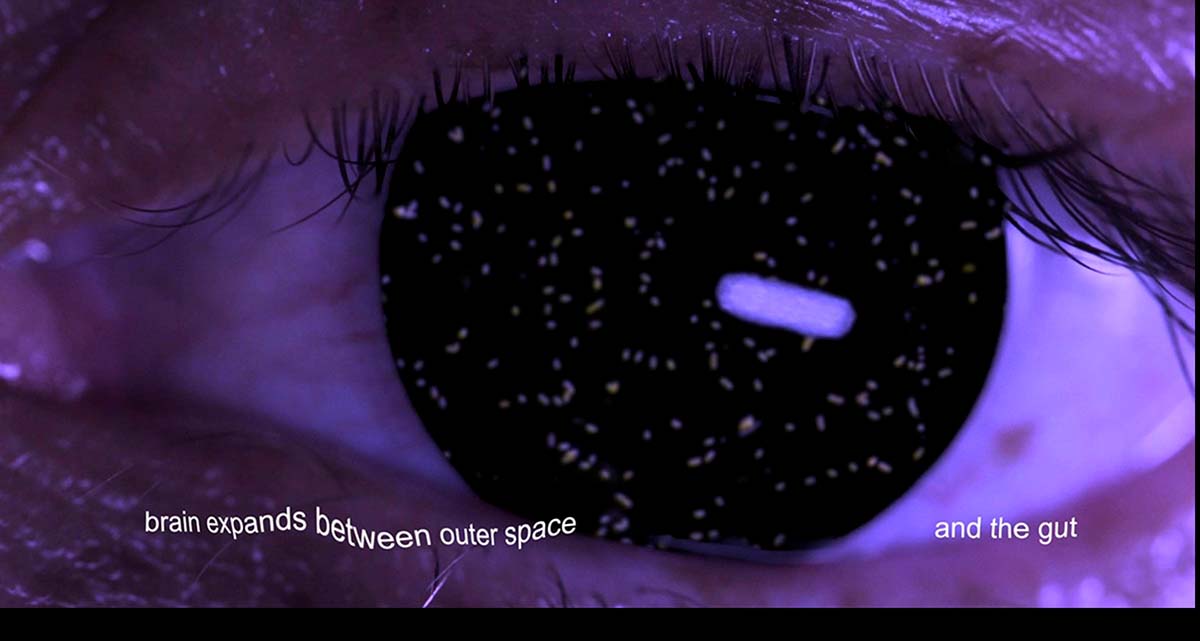
What does the world do to us?
The Medical Museion joins forces with Kunsthal Charlottenborg to present this autumn’s major exhibition The World is in You. Blending science, contemporary art, science and historical objects, the exhibition explores how our bodies are connected to the world in and around us.
What are we doing to the world? It is arguably the leading question of our time. Life in the Anthropocene means we are constantly confronted with how we affect and change the world around us. But this entanglement of bodies and world flows in both directions. Our environment also shapes our bodies and our lives, for good and for ill.
We inhabit a network of connections that range from the microscopic to the planetary. Our cells detect the shift from day to night, setting our body clocks in line with the rotation of the planet. The things we eat, touch and put in ourselves affect the trillions of microbial companions living on and inside of us. The generations that came before us have left traces on our DNA. The gravity of our planet limits our dreams of life among the stars.
The exhibition The World is in You takes its starting point in new biomedical research that seeks to understand our bodies, our health and our world. But conversations about the insights reached by scientific research cannot be confined to separate disciplines. They flow into the realms of art, history, culture, philosophy, politics and more. Together, they pave the way for new understandings of how our bodies are connected to the world around us.
‘The World is in You is a contribution to the important discussion about the relationship between man and environment, between body and world. It takes its point of departure in new research that opens up big questions and new perspectives on how we are shaped by and entangled with the world around us – in quite concrete, physical terms. By mixing science, art and history, the exhibition aims to accommodate wide-ranging conversations about the world in the body and the body in the world,’ says co-curator Adam Bencard, associate professor at the Medical Museion.
‘After our experiences of the last pandemic years, I think questions around our bodies and their fragile relationship to the world around us are foremost in people’s minds. In this exhibition, we have taken an exploratory and sweeping approach to this issue which brings together an enormous range of materials from the works of leading international contemporary artists to objects from scientific labs and artefacts of the past. But most importantly, this is a show about you. How you as the viewer relate to your environment, your past, your family, your work, and your body. I hope people will leave with a feeling of curiousity and wonder about the deep and complex connections between us and the world.’
– Kristin Hussey, co-curator, historian and researcher at the Medical Museion.
Kunsthal Charlottenborg’s director Michael Thouber comments on the collaboration with the Medical Museion:
‘I think that many factors – the COVID pandemic, globalisation, space exploration, the climate crisis and the refugee crisis – have contributed to a shared and ever-growing sense of how we are all connected to the wider world. The great societal challenges before us cannot be solved by individuals acting alone. We need to get everyone involved, and for our part we need to think about the role of art in completely new ways. That is why we at Kunsthal Charlottenborg are proud of this collaboration with the Medical Museion, which has produced an exhibition that showcases the great challenges of our times through contributions from strong voices within the worlds of art, medicine, research and philosophy’.

The exhibition comprises a blend of newly commissioned works of art, objects from the Medical Museion collections, paintings, video installations and scientific and historical artefacts. Every object has something to say about our interconnected bodies as the exhibition addresses four selected themes – Time, Space, Microbes and Generations.
Visitors will be able to view highlights such as Gaia, a seven-metre globe created by Luke Jerram [UK] which is on display for the first time in Denmark; a microbial imprint of artist Sonja Bäumel’s [AT] body in a petri dish in which the microbes from her skin have been allowed to grow; and Andrew Carnie’s [UK] video installation Blue Matter, which uses scientific images of neural networks to create landscapes of rivers, forests, buildings and bodies. Bio-artist Anna Dumitriu [UK] presents Hypersymbiotics: Post Pandemic Edition, a medicine cabinet containing serotonin-producing plasmids that live in E.coli bacteria in the intestines – the living Prozac of the future. Also included in the exhibition are tablets containing dust from the Moon and Mars in Un-Earthing (pharmakon) by Ralo Mayer, a work which asks the question of whether we can become one with alien worlds by ingesting and digesting them. These artworks will be displayed alongside objects from institutions including the Museum of Copenhagen, the Workers Museum, NASA, the Niels Bohr Institute, UCLA Film and Television Archive, and the Russian Academy of Sciences.

Artists featured: Mediated Matter Group/Neri Oxman, Ralo Mayer, Katie Paterson, Bradley Pitts, Lucy McRae, Kathy High, Jiwon Woo, Sonja Bäumel, Baum & Leahy, Guston Sondin-Kung, Marcus Coates, Susan Morris, Till Rabus, Heath Bunting, Isabella Martin, Maya Sialuk Jacobsen, Kaitlynn Redell, Mary Maggic, Pinar Yoldas, Mogens Jacobsen, Anna Dumitriu, Andrew Carnie, Jenna Sutela, Luke Jerram, Revital Cohen & Tuur Van Balen, Tine Friis & Eduardo Abrantes.
Curators: Adam Bencard, Jacob Lillemose, Kristin Hussey, Malthe Kouassi Bjerregaard.
The World is in You is curated by the Medical Museion (part of the Department of Public Health and the Novo Nordisk Foundation Center for Basic Metabolic Research – CBMR) at the University of Copenhagen. Produced in collaboration with Kunsthal Charlottenborg.
The exhibition has been made possible through generous support from the Novo Nordisk Foundation’s thematic programme on education and outreach, the Velux Foundation, the Bikuben Foundation, the Beckett Foundation, the Aage and Johanne Louis-Hansen Foundation, and the Espen and Tanja Neergaard Dinesen’s Foundation.
Kunsthal Charlottenborg’s exhibition program is supported by The Augustinus Foundation, The Danish Arts Foundation, The Obel Family Foundation.
Photos:
Mary Maggic, The Molecular Queering Agency, video still, 2017.
Jenna Sutela, Holobiont, 2018, video still, HD video, sound, 10.27, Ed. of 5, © the artist.